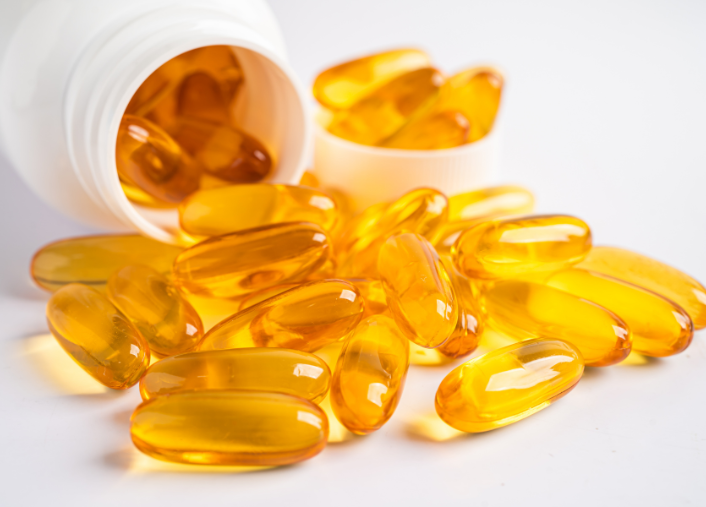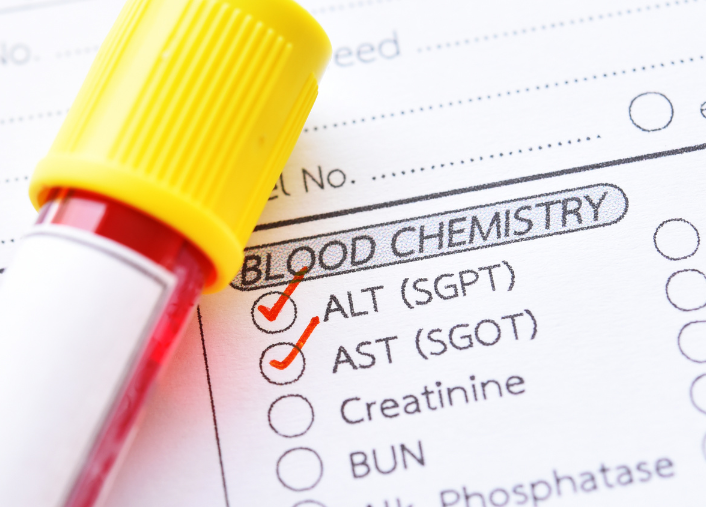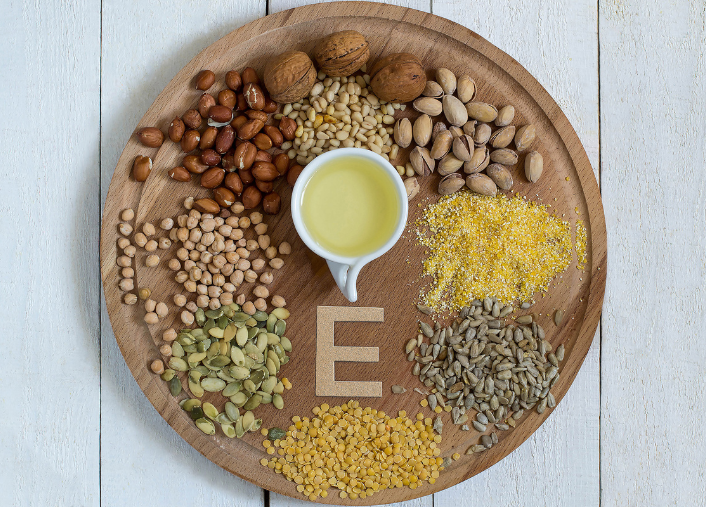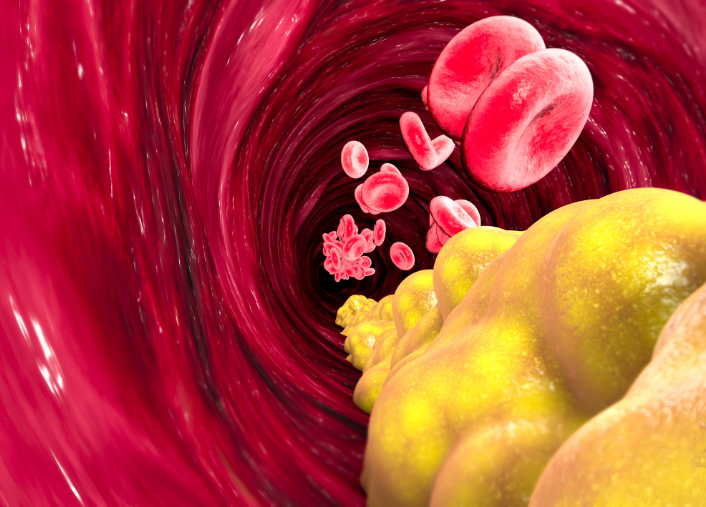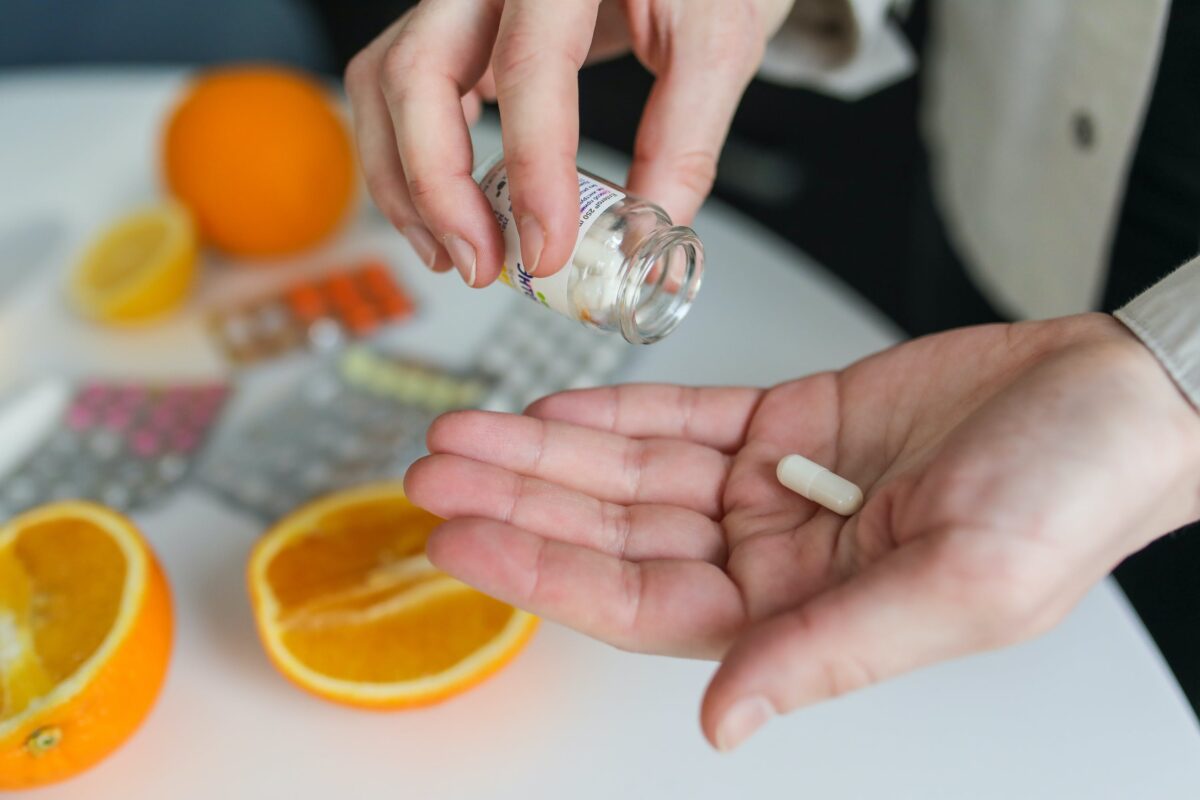Optimizing Vitamin B6 Levels for Overall Wellness
Aira
on
February 12, 2024
Latest Posts
Table of Contents
Optimizing Vitamin B6 Levels for Overall Wellness
Date of Content: January 15, 2024
Written by: Harvey Talento
Reviewed by: Maarit Tiirikainen, PhD
What is Vitamin B6?
Vitamin B6, or pyridoxine, is vital for maintaining good health. It can be obtained from a variety of foods, including fish, beef liver, potatoes, and certain fruits. The versatility of its dietary sources ensures accessibility for people with different eating preferences.
This essential vitamin plays diverse roles in the body, such as supporting the immune system, maintaining nerve health, aiding in energy metabolism from food, and facilitating proper blood clotting. Ensuring an adequate intake of vitamin B6 through a balanced diet contributes significantly to overall well-being. By incorporating a range of foods rich in this nutrient, individuals can promote optimal physiological functioning, reinforcing the importance of a nutritionally diverse and balanced diet for sustained health.
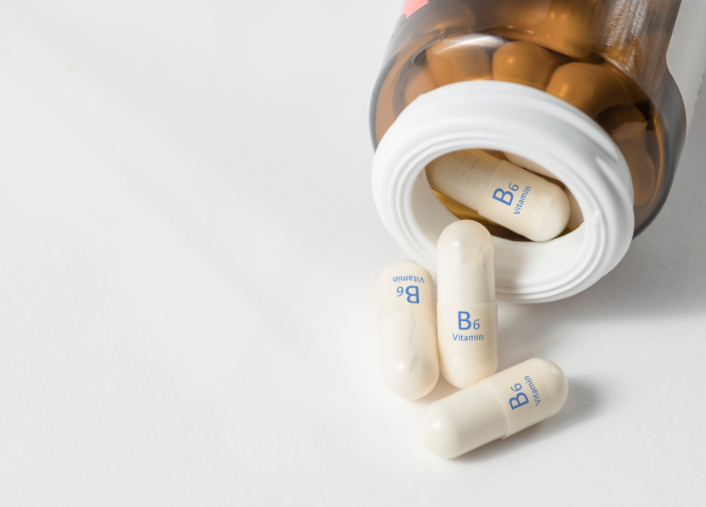
Forms of Vitamin B6
The term Vitamin B6 encompasses six distinct compounds that share similar biological activity. Of these, three primary forms take center stage in discussions about this crucial vitamin:
- Pyridoxine: Widely prevalent in vitamin supplements and fortified foods, pyridoxine is the most common form of Vitamin B6. It plays a pivotal role in supporting overall health and well-being.
- Pyridoxal: Recognized as the active form of Vitamin B6, pyridoxal participates in various metabolic processes. Its involvement extends to neurotransmitter synthesis and gene expression, highlighting its significance in fundamental physiological functions.
- Pyridoxamine: This form of Vitamin B6 contributes to the metabolism of amino acids, lipids, and glucose, showcasing its role in diverse biochemical pathways.
All three forms of Vitamin B6 have the potential to undergo phosphorylation, a biochemical modification where a phosphate group is added. The phosphorylated forms of Vitamin B6 are integral to its biological activity, further emphasizing the complexity and versatility of this essential nutrient in supporting various cellular processes.
Understanding these distinct forms and their roles underscores the importance of maintaining a balanced intake of Vitamin B6 for optimal health and metabolic functioning.
Functions of Vitamin B6 in the Body
- Metabolism of carbohydrates, lipids, amino acids, and nucleic acids
Vitamin B6 is involved in over 150 biochemical reactions in the human body, including the metabolism of carbohydrates, lipids, amino acids, and nucleic acids. It is essential for the biosynthesis of neurotransmitters such as serotonin, dopamine, and gamma-aminobutyric acid (GABA).
- Antioxidant and AGE-lowering compound
Vitamin B6 is an antioxidant and compound that can lower the advanced glycation end product (AGE) level. AGEs are harmful compounds that can accumulate in the body and contribute to the development of various diseases such as diabetes, Alzheimer’s disease, and cardiovascular disease.
- Proper functioning of the nervous system and immune system
Vitamin B6 is essential for the proper functioning of the nervous system and immune system. It is involved in synthesizing neurotransmitters and forming myelin, a fatty substance that insulates nerve fibers and speeds up nerve impulses. Vitamin B6 also plays a role in producing white blood cells, which are important for the immune system.
- Fatty acid biosynthesis, breakdown of certain storage compounds, and biosynthesis of plant hormones
Vitamin B6 contributes to fatty acid biosynthesis, the breakdown of certain storage compounds in animals and plants, and the biosynthesis of plant hormones, neurotransmitters, and organelle-specific compounds such as chlorophyll.
- Disease prevention
Vitamin B6 deficiency can lead to various diseases such as diabetes, heart disease, cancer, or the prognosis of COVID-19. However, it is important to note that the research provides little evidence that supplemental amounts of vitamin B6, alone or with folic acid and vitamin B12, can help reduce cardiovascular disease and stroke risk or severity.
Genetics of Vitamin B6 Levels
Exploring the genetics of vitamin B6 is essential in understanding bodily functions, including brain health. In recent research, specific genes have been found to regulate vitamin b6 in our bodies.
ALPL and NBF3 Genes
In exploring the genetic factors that impact vitamin B6 levels in the bloodstream, the ALPL and NBF3 genes have stood out as significant players. Specifically, genetic variations in this region, like the one represented by rs4654748, are strongly connected with vitamin B6 serum levels (p = 8.30 x 10^(-18)). The ALPL gene is involved in breaking down vitamin B6, implying that changes in this gene can play a crucial role in how the body regulates and uses vitamin B6. This discovery sheds light on a specific genetic mechanism influencing the levels of vitamin B6 in our system.
Furthermore, a 2018 GWAS also identified the ALPL gene, particularly the variant rs1106357, as a key regulator in human vitamin B6 metabolism in both CSF and plasma. The results underscore the potential of genetic studies involving metabolites in plasma and CSF to unveil essential biological aspects related to metabolite generation, transport, and degradation.
Unraveling the genetic aspects of vitamin B6 metabolism provides valuable insights into how our bodies manage this essential nutrient. The identification of key genes sheds light on the factors influencing vitamin B6 levels in both blood and cerebrospinal fluid. As we continue to explore the complexities of these genetic determinants, we gain a deeper appreciation for the regulatory mechanisms that impact vitamin B6 throughout our bodies.
Non-Genetic Factors Influencing Vitamin B6 Levels
Several factors influence the levels of Vitamin B6 in the body, and understanding these elements is crucial for maintaining optimal health.
Dietary Intake
Vitamin B6 is naturally present in various foods, including poultry, fish, potatoes, bananas, and fortified cereals. A well-balanced diet with an adequate intake of these sources is essential to prevent a deficiency. Insufficient dietary intake of Vitamin B6 can lead to health issues, emphasizing the importance of incorporating these foods into one’s daily meals.
Alcohol Consumption
Excessive alcohol consumption can negatively impact Vitamin B6 levels in the body. Alcohol interferes with the absorption of the vitamin and increases its excretion, potentially leading to a deficiency. Moderation in alcohol consumption is advised to maintain optimal Vitamin B6 levels and overall health.
Medications
Certain medications, including isoniazid, penicillamine, and cycloserine, can disrupt Vitamin B6 metabolism, potentially leading to a deficiency. Individuals taking these medications should be aware of the potential impact on their Vitamin B6 levels and discuss any concerns with their healthcare providers.
Medical Conditions
Certain medical conditions, such as inflammatory bowel disease, celiac disease, and kidney disease, can hinder the absorption and utilization of Vitamin B6 in the body. Managing these underlying health issues is crucial for maintaining adequate Vitamin B6 levels and preventing deficiencies.
Age
Older adults may experience a decreased ability to absorb and utilize Vitamin B6, increasing the risk of deficiency. As part of overall health management, older individuals may need to pay closer attention to their Vitamin B6 intake through dietary measures or supplements.
Understanding these factors and their potential impact on Vitamin B6 levels underscores the importance of a holistic approach to health, involving a balanced diet, moderation in alcohol consumption, awareness of medication interactions, and management of underlying medical conditions.
How To Optimize Vitamin B6 Levels
Vitamin B6 is an essential nutrient that plays a crucial role in the body’s metabolism of amino acids, carbohydrates, and lipids. The recommended daily intake of vitamin B6 for adults is 1.7 mg. Here are some ways to improve Vitamin B6 levels:
- Dietary sources
Foods rich in vitamin B6 include poultry, fish, potatoes, chickpeas, bananas, and fortified cereals. Consuming these foods can help increase Vitamin B6 levels.
- Supplements
Vitamin B6 supplements are available in oral capsules or tablets and liquids. The most common vitamin B6 vitamer in supplements is pyridoxine (in the form of pyridoxine hydrochloride [HCl]), although some supplements contain PLP. However, it is important to note that high levels of vitamin B6 supplements can cause nerve damage, skin rashes, and nausea.
- Lifestyle changes
Certain lifestyle changes can also help improve Vitamin B6 levels. For example, avoiding alcohol and quitting smoking can help increase Vitamin B6 levels.
About the LifeDNA Vitamins and Supplements Report
For individuals seeking personalized insights into their Vitamin B6 needs and overall health, consider exploring the LifeDNA Vitamins and Supplements Report today. LifeDNA offers a comprehensive report that takes into account your unique genetic makeup and lifestyle factors to provide tailored recommendations, including insights into the Vitamin B6 Levels trait.
By understanding your genetic predispositions related to Vitamin B6 metabolism, you can make informed decisions about your dietary choices, supplement needs, and overall wellness strategies. The LifeDNA report empowers you with valuable information that goes beyond generic recommendations, allowing you to optimize your Vitamin B6 intake based on your traits.
Summary
- Vitamin B6, obtained from various foods, plays essential roles in immune support, nerve health, energy metabolism, and blood clotting, emphasizing the importance of a balanced diet with adequate vitamin B6 content.
- Pyridoxine, pyridoxal, and pyridoxamine are the primary forms of Vitamin B6. With involvement in over 150 biochemical reactions, Vitamin B6 supports several critical physiological functions, such as neurotransmitter synthesis, acts as an antioxidant, maintains the nervous and immune systems, and contributes to fatty acid biosynthesis and plant hormone production.
- Several studies on genetic factors have discovered variants in the ALPL gene, revealing how its variations impact Vitamin B6 serum levels, and provide valuable insights into genetic mechanisms regulating the presence of B6 in blood as well as cerebrospinal fluid.
- Examining factors such as dietary intake, alcohol consumption, medications, medical conditions, and age underscores the importance of a holistic approach to maintaining optimal Vitamin B6 levels.
- Practical strategies, including the choice of dietary sources, supplements, and lifestyle changes can ensure adequate Vitamin B6 intake for overall well-being.
References
- https://www.nia.nih.gov/health/vitamins-and-supplements/vitamins-and-minerals-older-adults
- https://www.mdpi.com/2072-6643/13/9/3229
- https://www.mdpi.com/2073-4409/7/7/84
- https://www.mdpi.com/2072-6643/13/9/3229
- https://www.mdpi.com/2073-4409/7/7/84
- https://www.mdpi.com/2073-4409/7/7/84
- https://www.mdpi.com/2072-6643/13/9/3229
- https://pubmed.ncbi.nlm.nih.gov/19303062/
- https://pubmed.ncbi.nlm.nih.gov/30583557/
- https://www.mdpi.com/2072-6643/13/9/3229
- https://www.msdmanuals.com/home/disorders-of-nutrition/vitamins/vitamin-b6-deficiency
- https://www.msdmanuals.com/home/disorders-of-nutrition/vitamins/vitamin-b6-deficiency
- https://www.msdmanuals.com/home/disorders-of-nutrition/vitamins/vitamin-b6-deficiency
- https://www.msdmanuals.com/home/disorders-of-nutrition/vitamins/vitamin-b6-deficiency
- https://www.msdmanuals.com/home/disorders-of-nutrition/vitamins/vitamin-b6-deficiency
- https://ods.od.nih.gov/factsheets/VitaminB6-HealthProfessional/
- https://ods.od.nih.gov/factsheets/VitaminB6-HealthProfessional/
Customer Reviews




*Understanding your genetics can offer valuable insights into your well-being, but it is not deterministic. Your traits can be influenced by the complex interplay involving nature, lifestyle, family history, and others.
Our reports have not been evaluated by the Food and Drug Administration. The contents on our website and our reports are for informational purposes only, and are not intended to diagnose any medical condition, replace the advice of a healthcare professional, or provide any medical advice, diagnosis, or treatment. Consult with a healthcare professional before making any major lifestyle changes or if you have any other concerns about your results. The testimonials featured may have used more than one LifeDNA or LifeDNA vendors’ product or reports.


